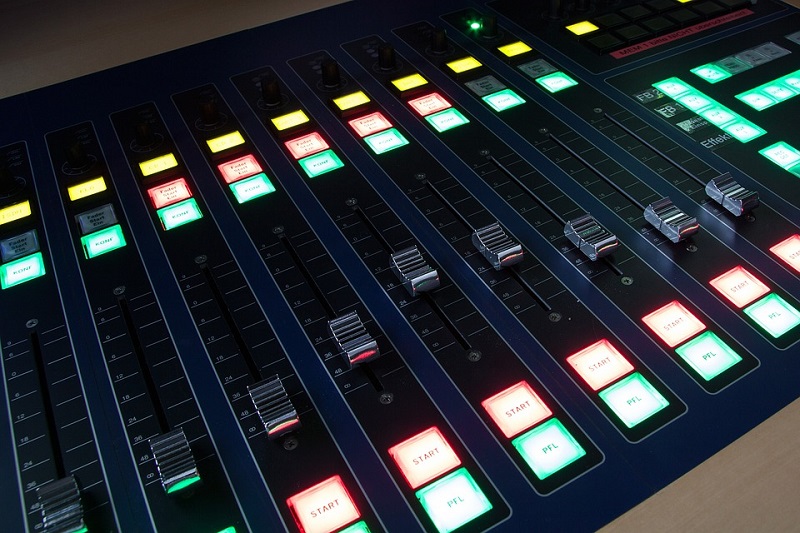I Switched From Audyssey to Dirac and I Wish I Hadn’t
Room correction is (one of) the shiny new things. You know what I’m talking about. A new feature or tech that gets all the nerds excited. They spew about it all over the ‘net, basically making it sound like it is indispensable. You MUST have it! Dirac Live is that for home theater right now. But I’m here to tell you, I switched from Audyssey to Dirac, and I wish I hadn’t! Here’s why!
Why I Switched
So let’s get this out there, I didn’t switch because I NEEDED to get Dirac. It just worked out that way. The TL:DR version is that my Denon X3600 died, and warranty work was estimated to take four to six months! Of course, I didn’t see myself waiting up to six months for a new AV receiver. I was able to get an Onkyo TX-NR7100 right away and pulled the trigger.
Don’t get me wrong, I was completely excited to get my hands on an HDMI 2.1 AV receiver, plus it had Dirac Live. I had read many articles and forum posts that said Dirac Live made a massive difference in their system and was significantly better than Audyssey.
Once my Onkyo arrived, I could barely wait to get it set up and see the massive difference that Dirac was about to bring me. But in the end, it turns out that I switched from Audyssey to Dirac, and I wish I hadn’t.
What I Didn’t Like
So Dirac is not bad; it’s just different. But there were a few things that I didn’t like, and it made me wonder why I switched from Audyssey to Dirac.
It’s MUCH Harder To Use
You will know I am no stranger to AV if you read my byline. I pride myself on being able to hook up and operate almost any new gear without looking at the manual. So with supreme arrogance, I downloaded the Dirac app on my smartphone, hooked up the included mic, and proceeded to start the process. After all, Audyssey was plug-and-play and walked me through the process. Surely Dirac would be as simple?
How wrong I was. First, Dirac forces the user to set the output level of the test tones sent to your speakers and measured by the mic. This is problematic for a couple of reasons. First, I don’t have an SPL meter to set the output, so I am guessing at best. Secondly, the output is one-size-fits-all. So if the output is too loud for the mic, it clips, and you have to start over!
But wait, I can get a USB mic (like the calibrated UMIK-1 we often recommend) and use the computer software. That’s gotta be easier, right? Nope! There are more layers involved with computer software. You need to load the calibration file, set the output level for each speaker (I like that part), and then you need to start the measuring process. But unlike Audyssey, you need to know each step, how to complete it, and move to the next. The only good part of all this is that I am not the only one lost leading to many great tutorials on YouTube.

This added complexity is one of the main reasons I wish I hadn’t switched from Audyssey to Dirac. Let me be clear (and I will repeat this), I may be an AV enthusiast, but I am a lazy AV enthusiast. I’ve spent years tweaking every aspect of my system. I’ve bought and sold tons of equipment. After endlessly annoying my wife with on-the-fly calibration, I have realized that close enough is almost as good a “perfect”!
No Curves of Equal Loudness
So without going down into a full-blown science lesson, humans perceive “loudness” differently at different frequencies. To simplify it, if you played two different frequencies at the same volume, say 50Hz and 10kHz, the 10kHz tone will sound subjectively louder. You can correct this by adding EQ to the lower frequencies to be objectively louder so that those frequencies sound subjectively the same. The problem is that, as you decrease the volume, the lower frequencies sound like they are getting softer faster. Curves of equal loudness are designed to combat this phenomenon. Still confused? Ok, let’s make it even easier. Have you ever turned down the volume knob on your AV receiver because someone was in bed? You can still hear the dialogue and music (10kHz), but there is no bass (50Hz).
To combat this, Audyssey uses a feature called Dynamic EQ. It applies a proprietary curve that ensures that bass and treble remain relative, regardless of the volume. Dirac does not have the same built-in feature. Sure, I can download or create curves, but they only work at one specific volume setting. They don’t apply differently as I change the volume. Remember when I said that Dirac was MUCH harder to use? I meant that. That’s one of the main reasons that I wish I hadn’t switched from Audyssey to Dirac.

And before you tell me that Onkyo has THX Loudness, you are correct. But enabling any THX mode DISABLES Dirac! So…not very helpful.
Can Be More Powerful…But It Isn’t Yet
So, of all the things that bother me, this tops the list. Many people online talk about Dirac’s power, but the versions we get are hamstrung. For example, my Onkyo allows me to set up subwoofers, but I don’t get the Dirac Bass management feature. And I can’t upgrade to it. Denon and Marantz? They are pay-to-play for Dirac Live, and bass management is still a pipe dream.

I get it. This is the first time Dirac has been offered in these AV receivers. We should be patient and see what the next iteration will be. But that’s not how this hobby works! We want the best, we want it now, and we want it cheap! Oh, and make it easy to use!
I will admit that Dirac gives you much more control over your system. You can easily play with curves, tweak your system and upload them to your AV receiver. But to get the most out of Dirac, you should grab Room EQ Wizzard (REW) and do many before and after measurements. That’s a lot of extra work I didn’t sign up for.
Subjectively, There Is No Difference
So here is where I will lose people, but let’s fight! Subjectively, there is no real difference between the two room correction software. Nothing jumped out at me as different or better. And no, I didn’t do any before and after measurements for Audyssey and Dirac. Why? We have established I am lazy and don’t have the time or inclination to go that far. This is my hobby, not my obsession.
And that’s the thing; your ears are the best judge of changes. The treble has not changed. The bass is not punchier or tighter. I have a well-treated room and the correct placement for all my speakers. If any room can benefit from room correction, it is mine. If Dirac is the world changer many claim, then I would be a prime candidate to hear its affects. And I can’t.

Granted, I moved from the top tier of Audyssey to Dirac Live, so maybe if I had gone from a less capable Audyssey, I might have noticed. But that’s not what people online say. They say Dirac is a gamechanger. I say it is just another version of the same game.
My Take
I admit it, I love new stuff like anyone else. I wasn’t sad that I got to check out Dirac and have some bragging rights over the cavemen forced to use Audyssey. But I quickly discovered that the grass isn’t greener on the other side. Dirac Live is “fine” but not life-altering. So when I say that I switched from Audyssey to Dirac, and I wish I hadn’t, I mean it. My level of laziness is now in danger because of Dirac!
And if you are in the market for a new AV receiver, and there is no significant price difference to get Dirac Live, go for it. Just know that it won’t be transformative if you room correction before. Plus, it will be much harder to use.
Before you upgrade to get the next big thing, take a fraction of that cash, treat your room, properly place your speakers and then re-run your correction software. I bet that you won’t be quick to rush out and spend that extra cash.



Hi Andrew,
Very good article. And exactly what I needed. Started “losing it” with all that Dirac Live hype out there. Reading your points, views, and experiences, I think I am a kindred spirit. Besides the Dirac Live part and absent writing skills, I could have been the one writing that article, all the way down to the “annoyed wife” 🙂 lol.
So, I already ordered that USB-mic to get started with Dirac Live on my pretty new Marantz Cinema receiver. But suddenly there was it again, that gut feeling. “Frank, what are you doing!? What improvements could Dirac Live possibly give to your setup?”
I have decent gear (Denon/ Marantz/ B&W) and, like yourself, I tweaked a lot with all the “low hanging fruits” over the years, like speaker placement, positioning, surfaces, cables, connectors, settings on both receiver and sub. I made use of the high tier Audyssey, combined with its app giving plenty of possibilities for configuration and curve adjustment already. Everything has grown into as good as it gets and it sounds, well, great (“close enough” ;-)).
Over these years, I experienced only a few “WOW”-moments. One was the picture quality on my first 4K-TV, and another one when I first got it right with the room calibration my Denon receiver offered back in the days. That sound stage and clarity of vocals! The third would be my better half noticing and even commenting on that improvement (qualifies as “super-WOW”!).
As so many times mentioned out there, it comes down to personal preference. Or better said, what one is used to hear. An analogy: I remember when I tested the recommended TV colour temperature setting for movie watching from ‘Normal’ to ‘Warm’/ ‘Warm2’. I could not believe that dull and brownish picture on the screen is supposed to be “as intended”. But I got used to it and now I wouldn’t have it any other way. When I now switch back to “Normal” colour temperature, it almost hurts my eyes. It is really hard to put that “perfect setup” in a box, isn’t it? 🙂
To really go “all in” with Dirac Live, REW and friends, to me a prerequisite would be a dedicated, rectangular, static room for the purpose of music listening and movie watching. I don’t have that. Our living room is constantly changing, pillows (millions of them – my wife’s’ hobby) moving around, small furniture, plants, and curtains frequently repositioned, leaving the parameters of the room constantly changing.
The conclusion, as of today, is that I probably will give Dirac Live a try, even in combination with REW. Just to get to know “the thing”, learn something new and because I like doing that kind of stuff. If Dirac Live really can improve what I have, I expect it to be marginal at best (then again, I have been wrong before!).
If I swap permanently from Audyssey to Dirac Live is up to my own laziness-level, not to mention time consuming obligations family wise ;-). Probably the sheer (over?) load of tweaking possibilities is going to be the showstopper for me.
Thanks again for sharing your experience.
Regards,
Frank
PS: my favourites in your article:
“…. close enough is almost as good a “perfect”!”
“…. is my hobby, not my obsession!”
“…. Did you hear a change?” My take: “Middle-aged, I finally can afford decent HiFi gear, but now my ears cannot hear the difference anymore!” D’OH 🙂 lol.
PPS: just came over how Marantz did word the purpose of Dirac Live in their presentation of the Cinema 40: “…….so, the Dirac Live, I would say, is really for the specialists, the CI dealers, for the guys who REALLY want to go in the extremes and really play around, fiddle around with the setup.” forward to 33:40 https://www.youtube.com/watch?v=UVVqJXk3fXc
Frank,
Thanks for such a thoughful and well written post. I do believe that we are kindred spirits. The audiophile black hole is all consuming and so hard to escape.
Despite that fact that I have decades of experience in this hobby as an enthusiast (not an expert by any means), I have tried all sorts of things and sadly had to admit that I didn’t hear a differece.
I still think that Dirac is a powerful, and capable room correction software, and no one should be disappointed with it at all. That said, I still would never recommend anyone spend extra to get Dirac if they already have the highest level of Audyssey available.
I know that forum people are lighting torches and getting ready to attack me for heresy, but I would dare them to come into my room, with either my x3600 or 7100 and tell me the exact difference between teh two softwares!
-A
It’s definitely confusing, but the level setting section doesn’t require you to set the levels perfectly like it might seem. Dirac will do that automatically. It’s explained in this video from Dirac. https://youtu.be/lnjSOC8oayY
Well I am an audiophile and used Audyssey and Dirac as well, and you could not be more wrong on your assessment of DIrac. First you really do not need an SPL at all. Second if your MIC is not setup properly on your laptop you will have sound issues, third, yes is more complicated the first time but much more accurate then Audyssey. Audysey colors the sound, Dirac does not, it delivers it as it came, no coloring, no tone control, etc.
So claiming that you can setup any audio system, that i a huge exaggeration of your part. I guess you just do not like Dirac or you have no clue how to setup.
My opinion and I am a 40 year audiophile with a lot of hardware.
Rob, I won’t try and argue with an audiophile.
My first comment would be the sound quality of an Onkyo receiver. I’ve been in this industry a long time and would not recommend their products to anyone. MHO